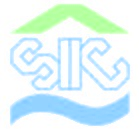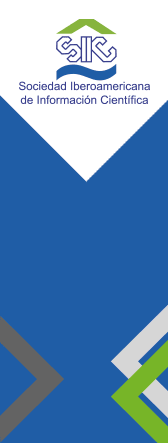TRATAMIENTO DE LA ISQUEMIA CEREBRAL GLOBAL EN JERBOS DE MONGOLIA(especial para SIIC © Derechos reservados) |
| El tratamiento con dosis orales únicas de las combinaciones policosanol (100 mg/kg) más aspirina (60 mg/kg) y policosanol (100 mg/kg) más atorvastatina (20 mg/kg) redujo marcada y significativamente la isquemia cerebral global en jerbos de Mongolia, con una eficacia muy similar entre ellos, pero ligeramente superior a la obtenida con la monoterapia con aspirina. Además, ambas combinaciones presentaron efectos antioxidantes, a diferencia de la monoterapia con aspirina, lo que les proporciona un beneficio adicional. |
|
Autor: Vivian Molina Columnista Experta de SIIC Institución: Centro Nacional de Investigaciones Científicas Artículos publicados por Vivian Molina |
|
Coautores Licet Mena Valdés* Miriam Noa Puig** Ambar Oyarzábal Yera* Zullyt Zamora Rodríguez*** Farmacéutica, Centro Nacional de Investigaciones Científicas, La Habana, Cuba* Médica, Centro Nacional de Investigaciones Científicas, La Habana, Cuba** Doctora en veterinaria, Centro Nacional de Investigaciones Científicas, La Habana, Cuba*** |
|
Aprobación 24 de Mayo, 2018 |
Primera edición 4 de Junio, 2018 |
Segunda edición, ampliada y corregida 10 de Enero, 2024 |
![]() Resumen
Resumen
El ictus isquémico es un problema de salud relevante a nivel mundial, por lo que la búsqueda de nuevas alternativas terapéuticas es un problema actual. El objetivo de este estudio fue comparar la eficacia terapéutica de policosanol más aspirina (AAS), policosanol más atorvastatina y AAS en la isquemia cerebral global en jerbos de Mongolia. Los jerbos se dividieron en cinco grupos: un control negativo (vehículo) sin isquemia cerebral (IC) y cuatro grupos con IC: control positivo (vehículo), policosanol (100 mg/kg) más AAS (60 mg/kg), policosanol (100 mg/ kg) más atorvastatina (20 mg/kg) y AAS (60 mg/kg). Todos los tratamientos se administraron después de la inducción de IC. Se analizaron los síntomas clínicos (SC), actividad de locomoción, puntaje histológico (PH) y concentraciones plasmáticas de malondialdehído (MDA) y grupos sulfhidrilos (GSH). Tanto el policosanol más AAS, como el policosanol más atorvastatina y el AAS redujeron significativamente los SC (66.5%, 65.2% y 56.5%, respectivamente), la hiperlocomoción (73.5%, 61.04% y 37.8%, en ese orden) y el PH (44%, 44% y 35.9%, respectivamente). Ambas terapias combinadas redujeron significativamente las concentraciones plasmáticas de MDA (77% y 78.2% de inhibición, en igual orden) y GSH (55.2% y 60.3% de inhibición, respectivamente), pero AAS no lo modificó. Las combinaciones terapéuticas de policosanol más aspirina y policosanol más atorvastatina protegieron de forma similar contra la isquemia cerebral en los jerbos de Mongolia, y fueron ligeramente superiores a la monoterapia con aspirina. Ambas combinaciones presentaron efectos antioxidantes, a diferencia de la monoterapia con aspirina, lo que les proporciona un beneficio adicional.
![]() Palabras clave
Palabras clave
aspirina, atorvastatina, policosanol, isquemia cerebral, combinaciones terapéuticas
Artículo completo
(castellano)
Extensión: +/-6.35 páginas impresas en papel A4
Exclusivo para suscriptores/assinantes
 Abstract
Abstract
Ischemic stroke is a relevant health problem worldwide, but until now pharmacological treatments have not achieved a significant impact in the reduction of stroke recurrence at the same time that their use is associated with different adverse events, so the search for new therapeutic alternatives is a current problem. This study was aimed to compare the therapeutic efficacy of policosanol plus aspirin (ASA), policosanol plus atorvastatin and ASA on global cerebral ischemia in Mongolian gerbils. Gerbils were divided into 5 groups: a negative control (vehicle) without cerebral ischemia (CI) and 4 groups with CI: positive control (vehicle), policosanol (100 mg/kg) plus ASA (60 mg/kg), policosanol (100 mg/kg) plus atorvastatin (20 mg/kg), and ASA (60 mg/kg). All treatments were administered after CI induction. Clinical symptoms (CS), locomotion activity, histological score (HS) and plasma malondialdehide (MDA) and sulphidriles groups (GSH) were assayed. Policosanol plus ASA, policosanol plus atorvastatin, and ASA reduced significantly the CS (66.5%, 65.2%, and 56.5%, respectively), the hyper-locomotion (73.5%, 61.04% and 37.8%, respectively), the HS (44%, 44% and 35.9%, respectively). Both combined therapies significantly reduced MDA (77% and 78.2% inhibition, respectively) and GSH (55.2% and 60.3% inhibition, respectively) plasma concentrations, but ASA did not modify it. Therapeutic combination policosanol plus aspirin and policosanol plus atorvastatin similarly protected against cerebral ischemia in Mongolian gerbils, being slightly higher than aspirin monotherapy. Both combinations presented antioxidant effects, unlike monotherapy with aspirin, which gives them an additional benefit.
 Key words
Key words
aspirin, atorvastatin, policosanol, cerebral ischemia, therapeutic combinations
Clasificación en siicsalud
Artículos originales > Expertos de Iberoamérica >
página www.siicsalud.com/des/expertocompleto.php/
Especialidades
Principal: Farmacología, Neurología
Relacionadas: Anatomía Patológica, Bioquímica, Epidemiología, Medicina Farmacéutica, Medicina Interna
Vivian Molina, Calle 198 e/ 19 y 21 Atabey, Playa, La Habana, La Habana, Cuba
1. Amarenco P, Bogousslavsky J, Caplan LR, Donnan GA, Hennerici MG . Classification of stroke subtypes. Cerebrovasc Dis 27:493-501, 2009.
2. Baker WL, Marrs JC, Davis LE, Nutescu EA, Rowe AS, Ryan M, Splinter MY, Vardeny O, Fagan SC. Key articles and guidelines in the primary prevention of ischemic stroke. Pharmacotherapy 33(6):e101-14, 2013.
3. Baker WL, Marrs JC, Davis LE, Nutescu EA, Rowe AS, Ryan M, Splinter MY, Vardeny O, Fagan SC. Key articles and guidelines in the acute management and secondary prevention of ischemic stroke. Pharmacotherapy 33 (6):e115-42, 2013.
4. Rivera-Nava SC, Miranda-Medrano LI, Pérez-Rojas JE, Flores J, Rivera-García BE, Torres-Arreola LP. Clinical guideline for the prevention, diagnosis and treatment of ischemic cerebral disease. Rev Med Inst Mex Seguro Soc 50:335-346, 2012.
5. Lakhan SE, Kirchgessner A, Hofer M. Inflammatory mechanisms in ischemic stroke: therapeutic approaches. Journal of Translational Medicine 7:97, 2009.
6. Muir KW, Tyrrell P, Sattar N, Warburton E. Inflammation and ischaemic stroke. Curr Opin Neurol 20:334-342, 2007.
7. Hong KS, Bang OY, Kang DW, Yu KH, Bae HJ, Lee JS, Kim JS, Yoon BW. Stroke statistics in Korea: Part I. Epidemiology and risk factors: A report from the Korean Stroke Society and Clinical Research Center for Stroke. J Stroke 15:2-20, 2013.
8. Feigin VL, Norrving B, Mensah GA. Global burden of stroke. Circulation Research 120:439-448, 2017.
9. Klein-Ritter D. An evidence-based review of the AMA/AHA guideline for the primary prevention of ischemic stroke. Geriatrics 64:16-20, 2009.
10. Inzitari D, Piccardi B, Sarti C. A critical review of aspirin in the secondary prevention of noncardioembolic ischaemic stroke. Int J Stroke 5:306-318, 2010.
11. Phillips RA. A review of therapeutic strategies for risk reduction of recurrent stroke. Prog Cardiovasc Dis 50:264-273, 2008.
12. Antithrombotic Trialists' Collaboration. Collaborative meta-analysis of successive trials of antiplatelet therapy for prevention of death, myocardial infarction, and stroke in high risk patients. BMJ 324:7, 2002.
13. Matias-Guiu J, Ferro JM, Sabin JA, Torres F, Jimenez MD, Lago A, Melo T, Tong DC. Comparison of triflusal and aspirin for prevention of vascular events in patients after cerebral infarction: The TACIP study: A successive, double-blind, multicenter trial. Stroke 34:840-848, 2003.
14. Bhatt DL, Fox KAA, Werner Hacke CB, Berger PB, Black HR, Boden WE, Cacoub P, Cohen EA, Creager MA, Easton JD, CHARISMA Investigators. Clopidogrel and aspirin versus aspirin alone for the prevention of atherothrombotic events. New Eng J Med 354:1706-1717, 2006.
15. The Stroke prevention by Aggressive Reduction in Cholesterol levels (SPARCL) investigators. High dose atorvastatin after stroke or transient ischemic attack. New England J Med 355:549-559, 2006.
16. Black DM, Bakker-Arkema R, Nawrocki JW. An overview of the clinical safety profile of atorvastatin (Lipitor), a new HMGCoA reductase inhibitor. Arch Int Med 158:577-584, 1998.
17. Barsante MM, Roffe E, Yokoro CM,. Tafuri WL, Souza DG, Pinho V, Castro MS, Teixeira MM. Anti-inflammatory and analgesic effects of atorvastatin in a rat model of adjuvant-induced arthritis. European Journal of Pharmacology 516:282.289, 2005.
18. Wassmann S, Laufs U, Müller K, Konkol Ch, Ahlbory K, Bäumer AT, Linz W, Böhm M, Nickenig G. Cellular antioxidant effects of atorvastatin in vitro and in vivo. Arterioscler Thromb Vasc Biol 22:300-305, 2002.
19. Hadi NR, Abdelhussein MA, Alhamami OMO, Muhammad Rudha AR, Sabah E. Antioxidant effect of atorvastatin in type 2 diabetic patients. Pharmacology & Pharmacy 1: 53-59, 2010.
20. Vasilieva E, Kasyanova O, Shpektor A. The antiplatelet effect of atorvastatin in patients with acute coronary syndrome depends on the hs-CRP level. Acute Card Care 10(3):181-4, 2008.
21. Arruzazabala ML, Carbajal D, Más R, Molina V, Valdés S, Laguna A. Cholesterol-lowering effects of policosanol in rabbits. Biological Research 27:205-208, 1994.
22. Arruzazabala ML, Carbajal D, Más R, García M, Fraga V. Effects of policosanol on platelet aggregation in rats. Thromb Res 69:321-327, 1993.
23. Castaño G, Más R, Arruzazabala ML, Noa M, Illnait J, Fernández JL, Molina V, Menéndez A. Effects of policosanol and pravastatin on lipid profile, platelet aggregation and endothelemia in older hypercholesterolemic patients. International Journal of Clinical and Pharmacological Research XIX(4):105-116, 1999.
24. Menéndez R., Más R, Amor A, Fernández JC, González RM. Effects of policosanol on the susceptibility of low-density lipoprotein (LDL) isolated from on hypercholesterolemic patients at high coronary risk to in vitro copper-mediated lipid peroxidation. A Randomised, double-blinded pilot study. Curr Ther Res 61(9):609-620, 2000.
25. Arruzazabala ML, Molina V, Carbajal D, Valdés S, Más R. Effect of policosanol on cerebral ischemia in Mongolian gerbils: Role of prostacyclin and thromboxane A2. Prostagl Leukotr Essent Fatty Acids 49:695-697, 1993.
26. Molina V, Arruzazabala ML, Carbajal D, Valdés S, Noa M, Más R, Fraga V, Menéndez R. Effect of policosanol on cerebral ischemia in Mongolian gerbils. Brazilian Journal of Medical and Biological Research 32(10):1269-1276, 1999.
27. Molina V, Ravelo Y, Noa M, Mas R, Pérez Y, Oyarzábal A, Mendoza N, M. Valle, Jiménez S, Sánchez J. Therapeutic effects of policosanol and atorvastatin against global brain ischaemia-reperfusion injury in gerbils. Indian Journal of Pharmaceutical Sciences 76(6):635-641, 2013.
28. Carbajal D, Arruzazabala ML, Molina V, Magraner J, Más R. Efecto del policosanol y su interacción con aspirina en modelos de isquemia cerebral. Arch Venezol Farmacol Terap 12:42-44, 1993.
29. Sánchez J, Illnait J, Mas R, Perez Y, Mendoza S, Cabrera L, Fernández L, Mesa M, Fernández JC, Oyarzabal A, Molina V, Jiménez S, Reyes P. Effects of policosanol plus aspirin therapy on the neurological recovery and plasma oxidative markers of patients with ischemic stroke. IOSRPHR 3(4):31-40, 2013.
30. Wang Q, Tompkins KD, Simonyi A, Korthuis RJ, Sun AY, Sun GY. Apocynin protects against global cerebral ischemia-reperfusion-induced oxidative stress and injury in the gerbil hippocampus. Brain Res 23, 1090(1):182-9, 2006.
31. Wang Q, Simonyi A, Li W, Sisk BA, Miller RL, Macdonald RS, Lubahn DE, Sun GY, Sun AY. Dietary grape supplement ameliorates cerebral ischemia-induced neuronal death in gerbils. Mol Nutr Food Res 49(5):443-51, 2005.
32. Kaundal RK, Iyer S, Kumar A, Sharma SS. Protective effects of pioglitazone against global cerebral ischemic-reperfusion injury in gerbils. J Pharmacol Sci 109:361-367, 2009.
33. McGraw CP. Experimental cerebral infarction effects of pentobarbital in Mongolian gerbils. Arch Neurol 34:334, 1977.
34. Katsumata N, Kuroiwa T, Ishibashi S, Li S, Endo S, Ohno K. Heterogeneous hyperactivity and distribution of ischemic lesions after focal cerebral ischemia in Mongolian gerbils. Neuropathology 26(4):283-92, 2006.
35. Ohkawa H, Ohishi N, Yagi K. Assay for lipid peroxides in animal tissues by thiobarbituric acid reaction. Anal Biochem 95:351-358, 1979.
36. Miao-Lin H. Measurement of protein thiole groups and glutatione in plasma. Methods Enzimiology 233:380-382, 1994.
37. Marxwell MA, Haas SM, Beiber LL, Tolbert NE. A modification of the Lowry procedure to simplify protein determination in membrane lipoprotein samples. Anal Biochem 87:206-209, 1987.
38. Bartus RT, Dean RL, Mennerick S, Eveleth D, Lybch G. Temporal ordering of pathogenic events following transient global ischemia. Brain Research 790:1-13, 1998.
39. Zhu H, Yoshimoto T, Imajo-Ohmi S, Dazortsava M, Mathivanan A, Yamashima T. Why are hippocampal CA1 neurons vulnerable but motor cortex neurons resistant to transient ischemia? J Neurochem 120:574-85, 2012.
40. Pradeep H, Diya JB, Shashikumar S, Rajanikant GK. Oxidative stress-assassin behind the ischemic stroke. Folia Neuropathol 50:219-230, 2012.
(exclusivo a suscriptores)
(exclusivo a suscriptores)
Autor
Expertos del Mundo
Especialidad principal:
Farmacología
Neurología
Relacionadas:
Anatomía Patológica
Bioquímica
Epidemiología
Medicina Farmacéutica
Medicina Interna
Extensión: ± 6.35 páginas impresas en papel A4


































